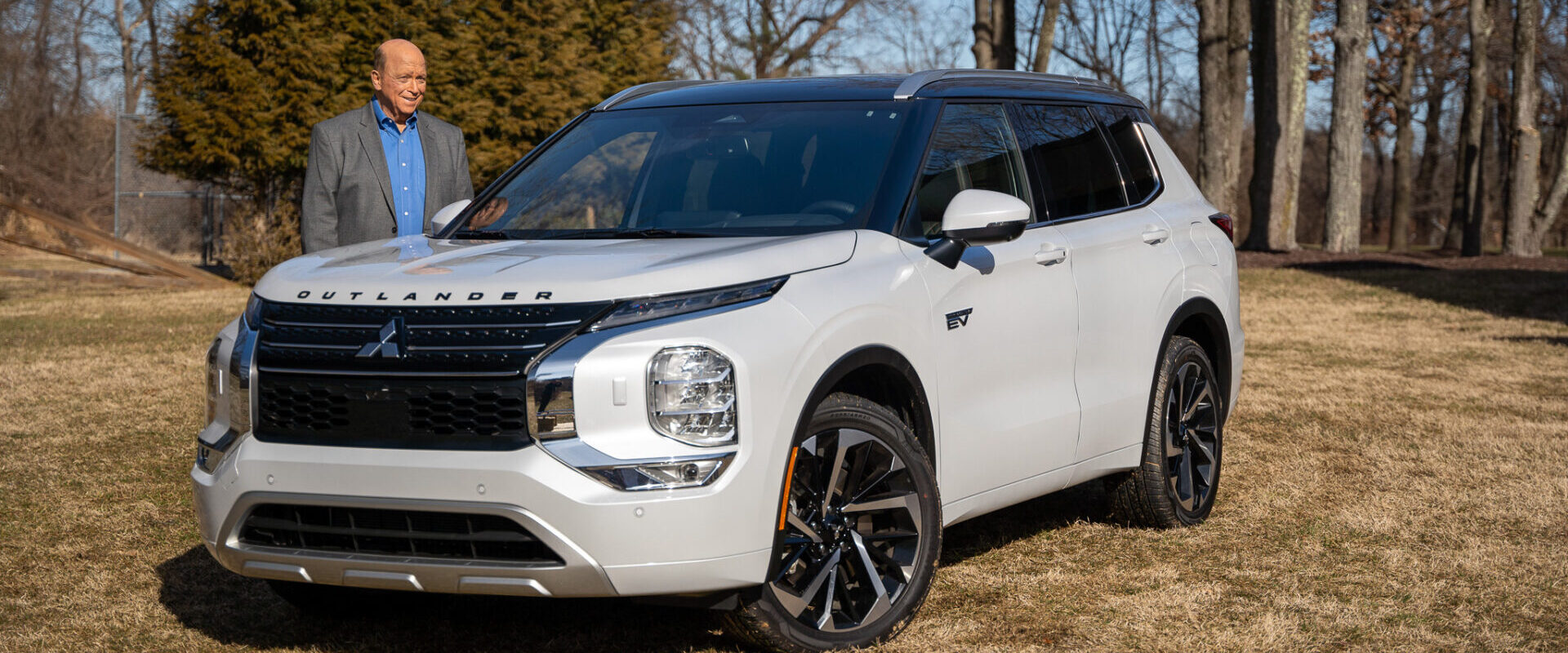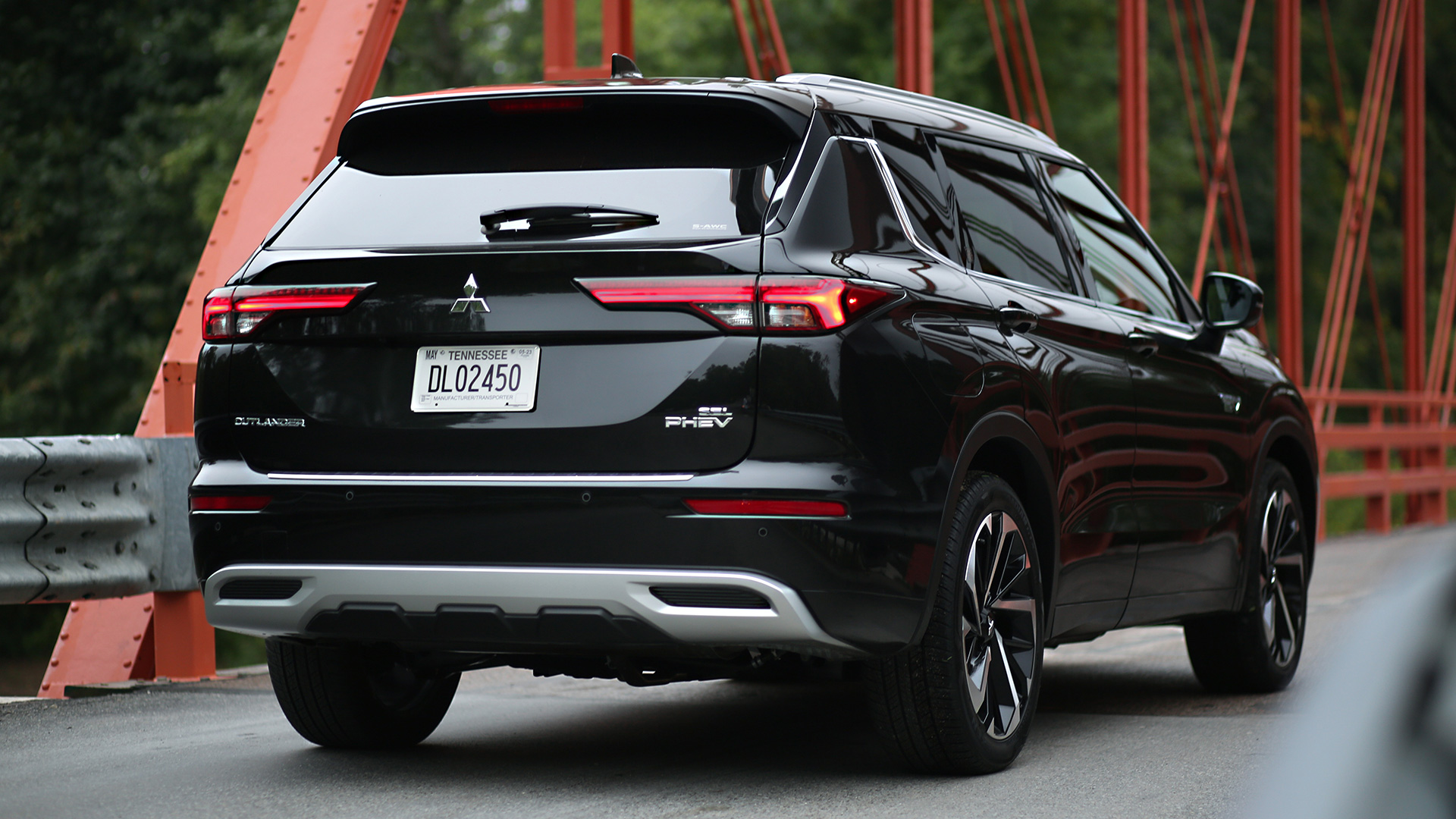2023 Mitsubishi Outlander PHEV
One Plug-In That’s Easy To Live With
Mitsubishi has had few bright spots in recent years, but when it comes to battery-electric tech, they’ve actually been ahead of the game. First with their i-MiEV electric car, and then giving their Outlander utility the plug-in hybrid treatment well before many larger rivals. Well, last year saw the arrival of a new generation of Outlander, and it looks like they’re still plugging away!
The Mitsubishi Outlander started its 4th-generation last year, beginning a new partnership with Nissan, specifically sharing a chassis with the compact Rogue. We weren’t sure where that would leave the Outlander PHEV, as it was not only way ahead of its time, but it was also by far our favorite version of the Outlander.
Well, we needn’t have worried, as much like they injected a whole lot of Mitsubishi into that shared platform, for 2023, Mitsubishi has taken their plug-in game to the next level with an all-new Outlander PHEV.
It starts with Mitsubishi’s own 2.4-liter I4 gas engine with not one, but two electric motors attached; an 85-kW unit that can drive the front wheel on its own, and a smaller one that prioritizes charging the battery. A larger 100-kW motor is mounted in back, providing power for the rear axle, and all told, the quartet delivers 248-horsepower and 332 lb-ft. of torque.
A bigger 20-kWh battery now has an EV-only range of 38-miles, which is 14 more than the previous generation. Thankfully, it still feels very refined in everyday use, despite the CVT transmission, which takes advantage of that electric boost to calm down extended engine revs. And braking is very natural feeling whether you’re running on battery power or burning fossil fuels.
And while it does feel very fast off the line in everyday driving situations, at our test track, shortly after that initial hole shot, power delivery levels off substantially. Still, 6.8-seconds to 60 is quicker than most of the compact crossovers, and almost 3 seconds faster than we saw with the original Outlander PHEV. Not much excitement from there though, as the petrol engine/CVT combo adds more noise than power. Still, a 15.9-second ¼-mile at 83 miles-per-hour is quite acceptable, and again, much quicker than before.
Hitting our slalom course, the Outlander feels like a completely different vehicle, cutting through the cones like a vehicle half its weight. Designed for all-weather traction and rally-style off-road performance more than rock climbing, this unique Twin Motor version of Mitsubishi’s Super All Wheel Control is more rear-biased than most AWD systems and keeps this utility smooth and flat no matter how hard you push it, using both torque vectoring and select braking. Turn-ins are sharp and precise, and there’s very little understeer or body roll.
 2023 Mitsubishi Outlander Dashboard
2023 Mitsubishi Outlander Dashboard
The benefit of PHEVs is directly linked to how much time you can spend on battery power; for our loop, we started out with a full tank and full battery, drove for 316-miles, and ended up with a 33.6 miles-per-gallon average. Which seems about right, as Government Fuel Economy Ratings are 64-Combined for the MPGe and 26-Combined with strictly the gas engine.
The PHEV is available in ES, SE, and SEL trims, so you’re not forced to go with the top drawer; but if you do, SEL gets updated trim inside and out, leather seats, roof rails, and the ability to use DC fast chargers. A 9-inch infotainment screen replaces the standard 8-inch unit, but all PHEV’s come with a great looking 12-inch driver display and substantial switchgear.
Plug-in privileges do come at a cost, as pricing starts around 10-grand over a comparable all-wheel drive ES, starting at $41,190; top SEL begins at $46,790. That’s certainly in line with other plug-in hybrid utilities, which are still relatively few in number.
But the Mitsubishi Outlander PHEV has been around long enough to actually be the world’s best-selling plug-in hybrid utility. For 2023 it has only gotten way better. It may not be the best choice for everyone, but if you’re able to take full advantage of that battery range, it’s one plug-in that’s easy to live with and even easier to love.








